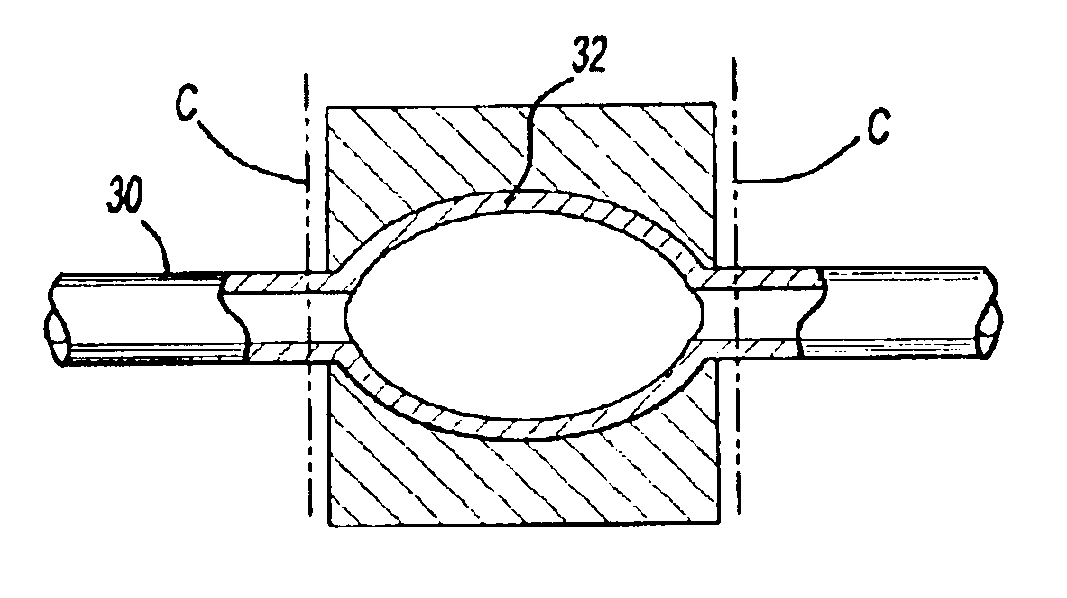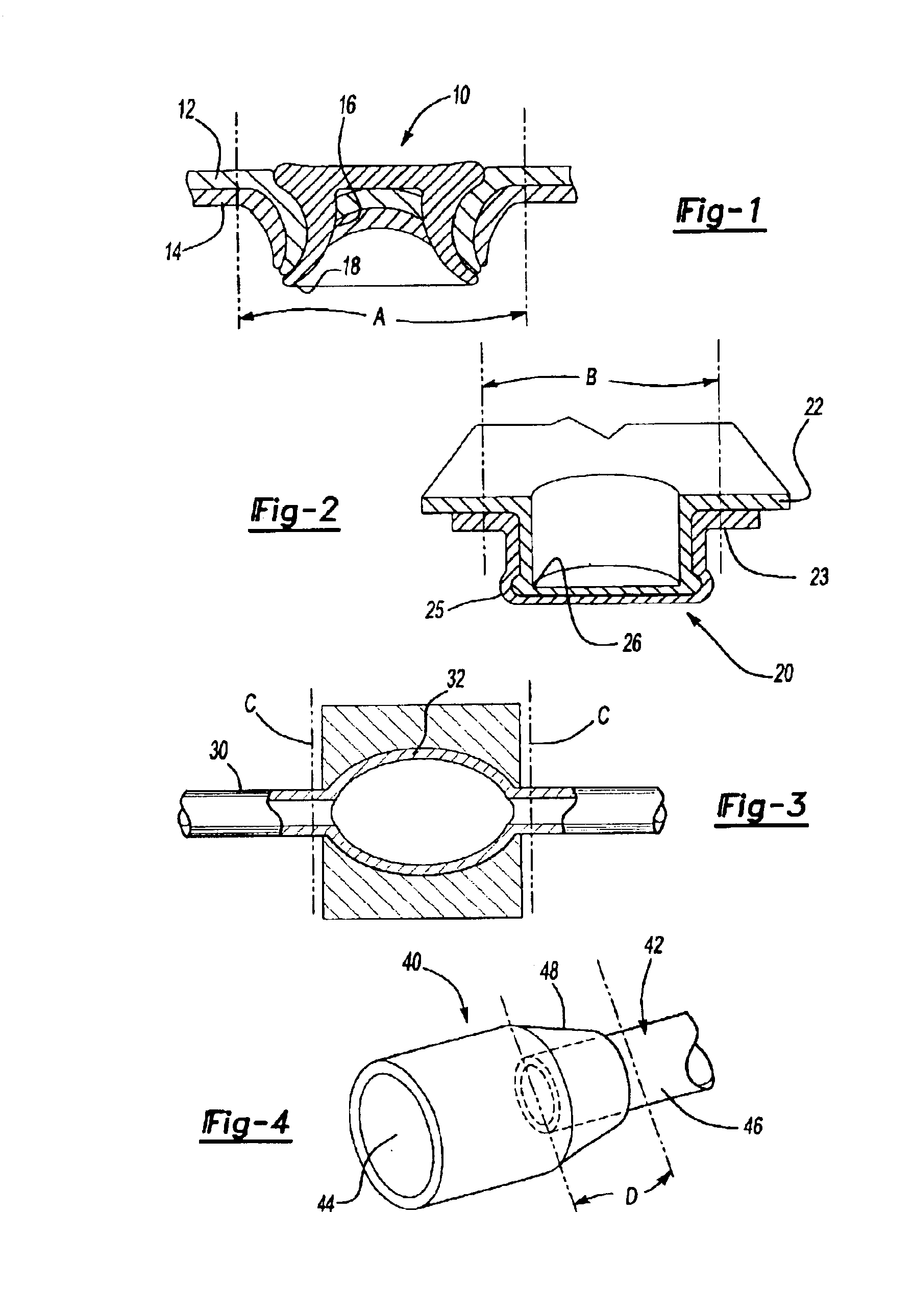Method of locally heating a part to reduce strength and increase ductility for subsequent manufacturing operation
a technology of local heating and workpiece, applied in the direction of heat treatment equipment, manufacturing tools, furnaces, etc., can solve the problems of manufacturing problems, adverse effects on certain manufacturing processes, and use of self-piercing rivets
- Summary
- Abstract
- Description
- Claims
- Application Information
AI Technical Summary
Benefits of technology
Problems solved by technology
Method used
Image
Examples
Embodiment Construction
[0021]Referring now to FIG. 1, a self-piercing rivet 10 is shown joining first and second panels 12 and 14 together. The first and second panels 12 and 14 have a local area that is heated between the phantom lines A. The area between the lines A is heated preferably by induction heating or possibly by a flame torch to reduce the strength and increase the ductility of the material in the local area. The self-piercing rivet 10 is then inserted through the first and second panels 12 and 14 piercing them to form a hole 16 as the self-piercing rivet 10 is driven through the first and second panels 12 and 14. A swagged end 18 is formed to lock the panels together.
[0022]Referring now to FIG. 2, a clinch joint 20 is shown for securing two panels 22, 23, or two parts together. The clinch joint is formed in the panels 22, 23. One or both of the panels 22, 23 are heated in a local area surrounding the clinch joint 20 generally between phantom lines B. During the clinch assembly process, interl...
PUM
| Property | Measurement | Unit |
|---|---|---|
| strength | aaaaa | aaaaa |
| ductility | aaaaa | aaaaa |
| force | aaaaa | aaaaa |
Abstract
Description
Claims
Application Information
 Login to View More
Login to View More - R&D
- Intellectual Property
- Life Sciences
- Materials
- Tech Scout
- Unparalleled Data Quality
- Higher Quality Content
- 60% Fewer Hallucinations
Browse by: Latest US Patents, China's latest patents, Technical Efficacy Thesaurus, Application Domain, Technology Topic, Popular Technical Reports.
© 2025 PatSnap. All rights reserved.Legal|Privacy policy|Modern Slavery Act Transparency Statement|Sitemap|About US| Contact US: help@patsnap.com


